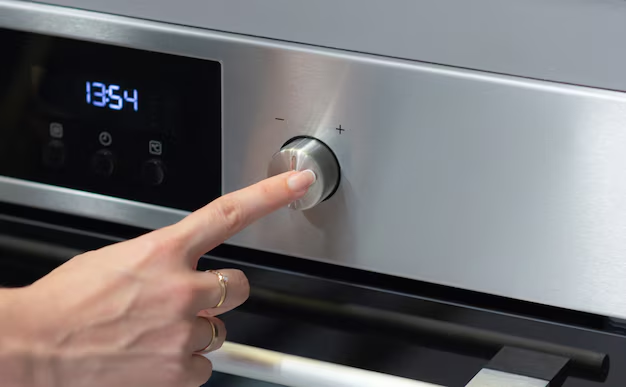Optimal Refrigerator Temperature: Your Guide to Fresh Food
When it comes to keeping food fresh, the temperature of your refrigerator plays a crucial role. Yet, many of us overlook the importance of setting the right temperature. Not only does the correct temperature extend the life of your food, but it also prevents the growth of harmful bacteria. This guide dives deep into the ideal refrigerator settings, exploring why they matter and how to maintain them. Let's keep your food fresh and your health protected.
🧊 The Ideal Temperature for Your Refrigerator
Finding the Sweet Spot
Maintaining the right balance: The refrigerator temperature should ideally be set at around 37°F (3°C). This temperature is critical for slowing down bacterial growth and ensuring food safety. At this temperature, food stays fresh longer without freezing.
Why Temperature Matters
- Food safety: Temperatures above 40°F (4°C) can allow bacteria like Salmonella and E. coli to thrive, which can cause foodborne illnesses.
- Food quality: Cold, but not freezing, temperatures maintain the texture and flavor of your food. Produce, dairy, and meats last longer and taste better when stored correctly.
- Efficiency: Setting your refrigerator correctly can lead to significant energy savings, reducing both your utility bills and carbon footprint.
🧐 Understanding Temperature Variations
Ambient Influence
Your refrigerator temperature can vary due to external factors:
- Room temperature: If the kitchen is warm, the refrigerator works harder to maintain the set temperature.
- Opening frequency: Frequent opening increases the internal temperature temporarily, which can affect stored items.
Different Zones in Your Fridge
Refrigerators often have varying temperatures across different areas:
- Doors: These are the warmest sections. Store condiments or items less susceptible to spoilage here.
- Drawers: Usually designed to store fruits and vegetables. Some refrigerators offer adjustable settings for these sections to optimize freshness.
- Top shelves: Tend to be warmer than the lower shelves; ideal for ready-to-eat foods like leftovers.
📊 Refrigerator Temperature Monitoring
Tips for Accuracy
- Use a thermometer: Place an appliance thermometer in your fridge for an accurate reading.
- Regular checks: Check the temperature at least once a week to ensure it stays consistent.
- Manual adjustments: If you notice fluctuations, adjust accordingly using the settings panel.
Troubleshooting Common Issues
- Too cold? If food is freezing, raise the temperature slightly.
- Too warm? Lower the temperature and check for obstructions that might be blocking airflow.
🛠️ Setting Up Your Refrigerator Efficiently
Arranging Items for Optimal Cooling
- Don’t overcrowd: Allow air to circulate by avoiding overcrowding. It ensures even cooling across the entire fridge.
- Strategic placement: Store meats on the lowest shelf to prevent drips from contaminating other foods.
- Mind the doors: Keep eggs, milk, and perishable goods away from the door, as it’s the warmest section.
Energy-Saving Practices
- Close the door: Keep the refrigerator door closed as much as possible.
- Cool leftovers: Before placing leftovers in the fridge, let them cool to room temperature to reduce strain on the appliance.
- Clean coils: Routinely vacuum refrigerator coils to enhance efficiency.
🔑 Quick Temperature Setting Tips:
- 🥶 Set your fridge to 37°F (3°C) for optimal freshness.
- 🌡️ Check temperatures weekly with an appliance thermometer.
- 📍 Store items strategically to promote airflow.
⚠️ Seasonal Considerations
Adjusting for Seasonal Changes
In different seasons, the following adjustments might be required:
- Summer: When external temperatures rise, fridge settings may need slight adjustments to maintain the ideal internal climate.
- Winter: Energy demands reduce in cooler temperatures, enabling your refrigerator to maintain settings without extra effort.
Additional Tips
- Power outages: Check the temperature promptly after a power outage as warm air can quickly affect items inside.
- Vacation mode: Utilize vacation settings if available when away for a short time to save energy while keeping items safe.
🌍 Sustainability and Your Refrigerator
Refrigerators today come with a variety of features aimed at enhancing sustainability:
- ENERGY STAR Ratings: These identify appliances that exceed federal minimum requirements for energy efficiency.
- Smart technology: Newer models offer features like smartphone control for temperature adjustments on-the-go, further saving energy.
📝 Recap & Recommendations
To summarize, the optimal refrigerator temperature is vital for food safety and efficiency. Simple practices like mindful organizing and regular temperature checks can make a significant difference in performance and longevity. Remember, the way you store food impacts its freshness and safety. Keep these strategies in mind to make the most of your refrigerator.
Practical Tips:
- 📦 Don’t overcrowd the fridge to allow proper air circulation.
- 🔄 Rotate stored items to use older products first.
- 🚪 Limit door opening to keep energy use lower.
By keeping your refrigerator at the ideal temperature, you support not only your household's health but also contribute positively to the environment. Whether fine-tuning for seasons or arranging your groceries, each small step leads to a functional and efficient kitchen appliance that serves you well.
